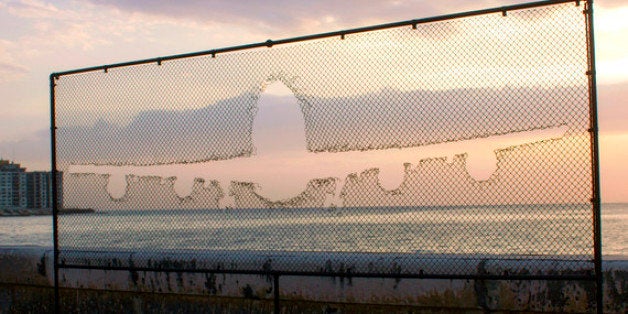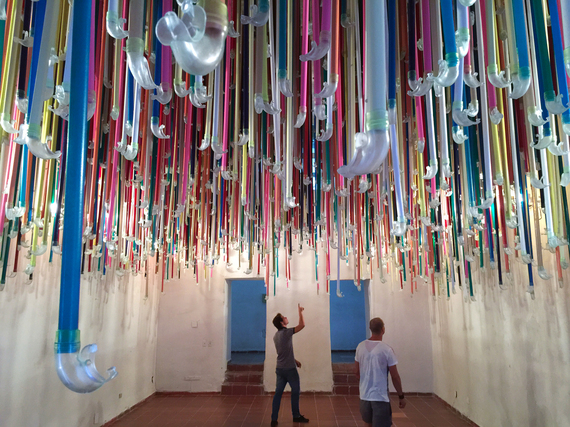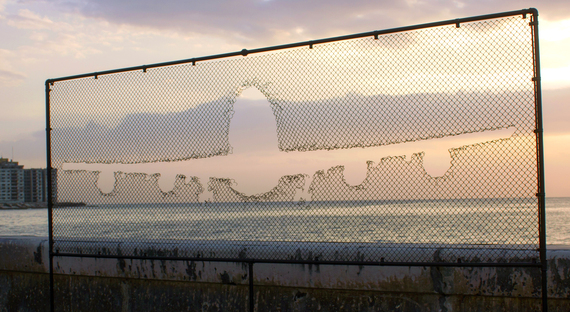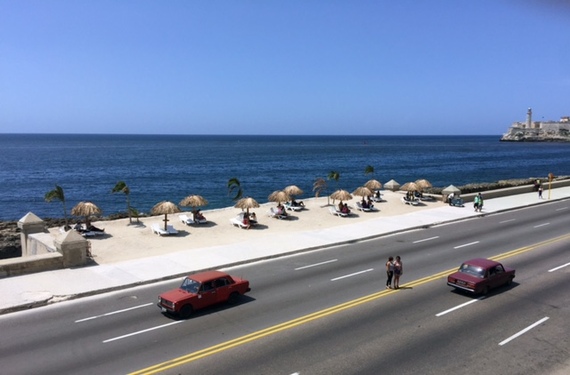
Thursday, September 17th, Robert Miller Gallery in Chelsea opens Nuevos Colores, a group show highlighting Cuban artists across generations and working in a diverse range of mediums.
One particular artist struck my eye during a trip to Cuba this past May for the Havana Biennial - Arlés del Rio. His installation, La necesidad de otros aires (The need of other airs), was one of most engaging and powerful in Zona Franca, a main exhibition site of the Biennial, and is now being featured in Nuevos Colores.
As I walked into the Morro Castile, the old Spanish fortress on the cliff above the mouth of Havana Harbor - a former prison turned exhibition space - a rainbow of long snorkels filled an entire room's ceiling like colorful straws that extended down, the mouthpieces just beyond my grasp. Enticing but unattainable, this work immediately resonates.
Robert Miller Gallery describes the work as "initiating an experience of the physical and psychological boundaries that surround the island of Cuba." Arlés first exhibited Fly away -- a chain-link fence with the contours of an airplane left where it might have burst through -- in the 2011 Havana Biennial. Addressing a similar theme, the universal message is clear. Existentially, we all wish to be free. Whether politically, creatively, in our hearts or in our souls, we have all felt that longing, to be able to express oneself and explore - to breathe other airs.
On my way to Arlés' studio, driving down the Malécon in a vintage Ford convertible, it was easy to get caught up in the nostalgia of all the old cars from the 50s. The shiny ones full of tourists, hooting and hollering as their drivers honked their horns in a colorful procession, a heavy contrast to the deteriorating buildings, the piles of rubble one must navigate throughout Havana, and the way the average Cuban lives.
Arlés' work is direct and speaks to the people. This was evident in Resaca (Undertow) - the beach he created along the Malécon, the main road that borders the city along the Gulf of Mexico. During the Biennial, a near mile-long stretch was dedicated to art installations, and while you might have expected there to be a natural beach bordering this road, instead there is a sea wall pounded by waves.
Arlés' beach was full of sand, lounge chairs and cabanas - a place to escape the struggles of city life, reflect and even play. Due to antiquated transportation services, the average Cuban living in central and old Havana, the neighborhoods that also border this stretch of the Malécon, must endure a cumbersome journey to get to the nearest beach. Covered over by the sand, the sea wall was no longer visible and a new horizon was created. If only for a short interlude.
I keep thinking about the Sinatra song from the 1950s I heard all over Havana - My Way. There is an incredible energy there and a desire to interact with the US, but on their own terms. Arlés is one to watch as Cuba and America open up, and we become more acquainted with one another.


